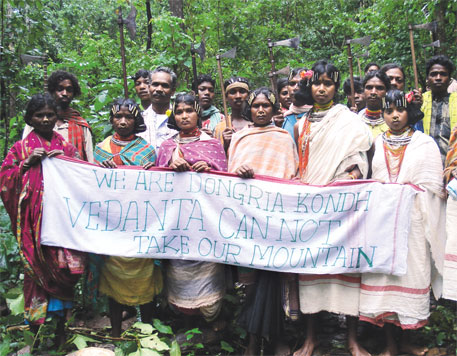As the world commemorated Indigenous People’s Day on August 9, activists pointed to the increasing state militarization against the struggles of tribals, aboriginals and people of First Nations as they seek to protect their rivers, forest and land.
In central India, a new wave of military operations against the armed Communist Party of India (Maoists) has led to repression against the local tribal population, also known as the adivasis. On August 6, in an operation in Chhattisgarh’s Sukma area, the paramilitary forces and State police claimed to have killed 15 members of the Maoist movement. But tribal and human rights activists said that most of the people killed were members of the tribal community from the locality. It is alleged that 6 of the victims were minor boys between 13 and 15 years. In a statement, local activist Soni Sori and Lingaram Kodopi, a journalist and documentary filmmaker from Chhattisgarh, alleged that the operation was staged and most of those killed were innocent. Sori, after visiting the area, noted that the victims were, in fact, working in their fields when they were attacked by state forces.
Despite increasing state repression on indigenous communities, the resistance against militarization continues across the globe. Indigenous People’s Day was marked with a wave of mobilizations. In Australia, seven aboriginal organisations of New South Wales marched to the State Parliament in Sydney, demanding a new agenda for indigenous rights. In South Africa, the Khoisan people marched to the Castle of Good Hope in Cape Town to observe the international day of the indigenous. Khoisan people believe that the castle was the origin of the political and cultural onslaughts on them. In North Dakota, USA, the Standing Rock Sioux Tribe members protested against the construction of Dakota Access Oil Pipeline (DAPL) through their sovereign territories.
In Chile, the day was marked by developments in the Luchsinger-Mackay case, especially defence lawyer’s appeal against the verdict convicting the Mapuche community of terrorism. The conflict between the Mapuche community and the state has resulted in the militarization of the La Auracania and Bio Bio regions of Chile.
The Confederation of Indigenous Nationalities of Ecuador (CONAIE), on the occasion, asked the country’s government to take further the process of establishing a plurinational state by ending all forms of structural discrimination. Ecuador was declared a plurinational country in its 2008 constitution. CONAIE considers the various sections of the population, such as the many indigenous groups, Afro Ecuadorians, Mestizos, Mulatos and Whites, as distinct ethnic nationalities. Thus, the confederation had a long-standing demand that the country be declared plurinational. Even though the term was incorporated in the constitution, it was not followed by secondary legislations required for the political and administrative decentralization of the country envisioned in CONAIE’s version of plurinationalism. In 2009, Bolivia had also declared itself a plurinational state in its new constitution.
The idea of indigenous nationhood emerged in modern Latin American republics during the 1920s, when the 3rd International (Cominten) advised the Latin American left to work to create an indigenous republic in the Andes. It was the Communist Party of Ecuador (PCE) under the leadership of Dr. Ricardo Parades that began organizing the indigenous people in the country and founded the first organization to this end: the Ecuadorian Federation of Indians (FEI) in 1944.





